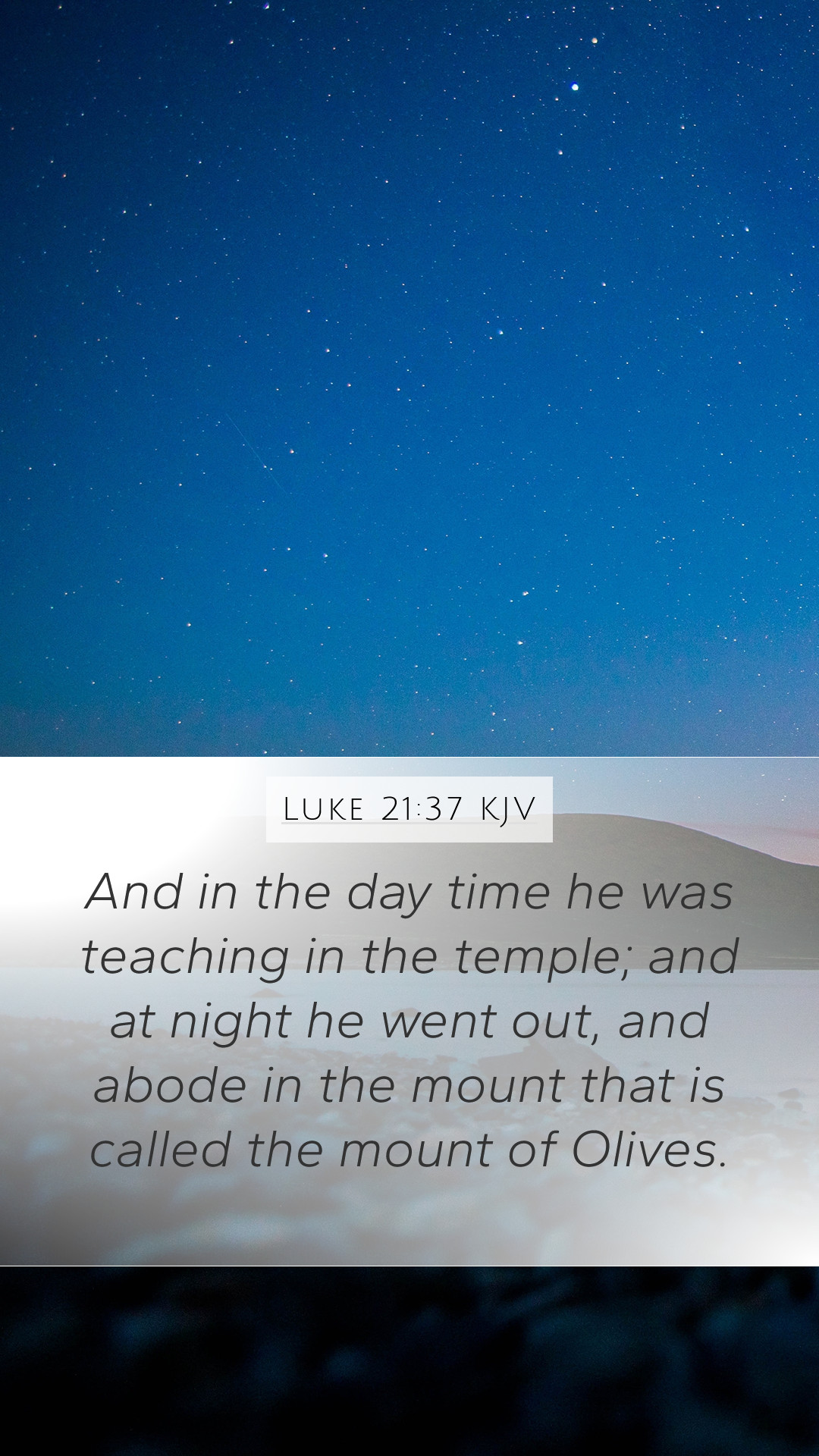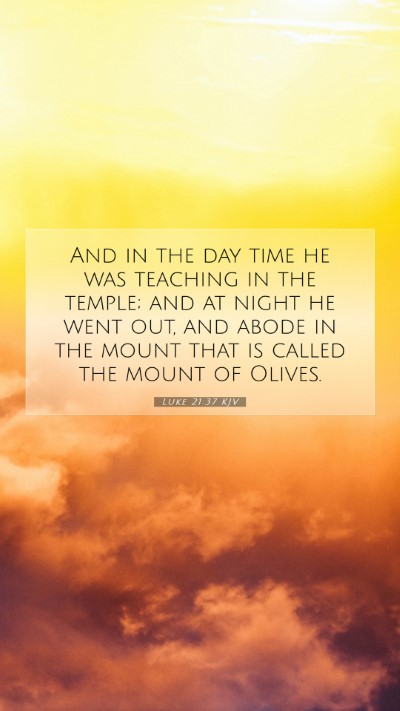Bible Verse Meaning and Commentary on Luke 21:37
Verse (Luke 21:37): "And in the daytime he was teaching in the temple; and at night he went out, and abode in the mount that is called the mount of Olives."
Summary of Interpretation
This verse illustrates the dual nature of Jesus' ministry during His final days in Jerusalem. By day, He engaged with the people in the temple, imparting His teachings, while by night, He withdrew to the Mount of Olives, a place of prayer and solitude.
Bible Verse Meanings
- Teaching in the Temple: Jesus’ presence in the temple signifies His role as a teacher and the importance of sharing divine wisdom. Public discourse in sacred spaces underlines His authority and commitment to fulfilling His mission (Matthew Henry).
- Nightly Retreat: The retreat to the Mount of Olives symbolizes the need for spiritual renewal and prayerful communion with God, emphasizing the importance of solitude in spiritual preparation (Adam Clarke).
Bible Verse Commentary
According to Albert Barnes, this passage highlights the contrast between Jesus' active teaching during the day and His thoughtful retreat at night. This portrayal not only serves to reinforce His message but also provides a model for believers on the necessity of balancing public ministry with personal devotion.
Matthew Henry elaborates, stating that Jesus utilized every opportunity to teach and prepare His followers while demonstrating His reliance on prayer and intimacy with the Father during the quieter hours. This duality brings attention to how Jesus modeled a life of service fueled by prayer.
Understanding Scripture: A Deeper Analysis
The teaching acts as both a fulfillment of the prophetic role and an unveiling of His impending sacrifice. His presence in the temple before the coming of His passion serves as a reminder to believers of the prevailing importance of Heeding His words.
Moreover, the Mount of Olives carries significant biblical symbolism. It becomes a place where Jesus often went for prayer, symbolizing surrender and a victory of spirit over flesh in preparation for the trials ahead. It relates closely to themes of vigilance and prayerfulness in the face of life's challenges.
Applications and Reflections
This verse prompts believers to consider their own rhythm of ministry versus personal spiritual practices. Just as Jesus made time for both teaching others and seeking solitude, modern followers are encouraged to find balance, fostering spiritual lives that are rich in both active ministry and deep personal prayer.
Heeding the example set by Jesus can help any Bible study groups incorporate a prayerful approach into their studies, enhancing discussion and group dynamics. This practice allows believers to connect deeper with the text and experience transformation through both understanding and application.
Cross References
- Matthew 26:30-31: Jesus leaving to pray on the Mount of Olives.
- Mark 14:26: Reflection on Jesus' time spent on the Mount of Olives.
- Luke 22:39-46: The agony in the garden also on the Mount of Olives.
- John 7:14: Jesus teaching in the temple during the Festival of Tabernacles.
- Acts 1:12: The Mount of Olives as a significant place in early Christian tradition.
Conclusion
The verse of Luke 21:37 provides a snapshot of Jesus' last days on earth, encapsulating His dedication to teaching and prayer. It invites deeper understanding of the balance required in our own spiritual lives and encourages believers to find strength in prayer amidst active ministry. Through the lens of biblical exegesis, this verse unpacks layers of meaning that resonate through scripture, prompting reflection, teaching, and a call to action for all who study the Word.


